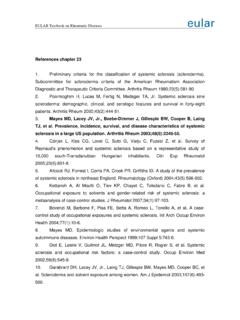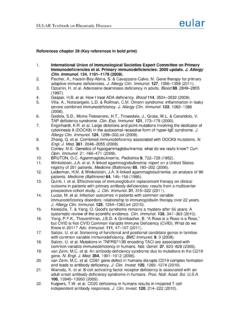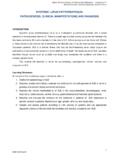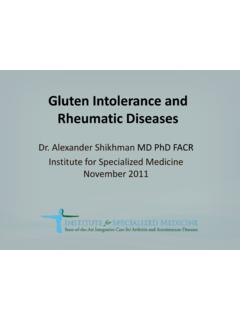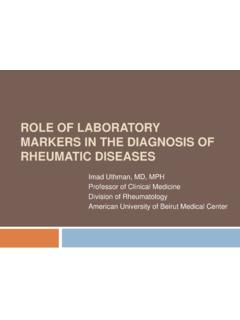Transcription of ICD-10 Instruction manual 2010 Edition - WHO
1 ICD-10 International Statistical Classification of Diseases and Related HealthProblems 10th Revision Volume 2 Instruction manual2010 EditionWHO Library Cataloguing-in-Publication DataInternational statistical classification of diseases and related health problems. - 10th revision, Edition : v. 1. Tabular list v. 2. Instruction manual v. 3. Alphabetical - classification. Health Organization. 978 92 4 154834 2 (NLM classification: WB 15) World Health Organization 2011 All rights reserved. Publications of the World Health Organization are available on the WHO web site ( ) or can be purchased from WHO Press, World Health Organization, 20 Avenue Appia, 1211 Geneva 27, Switzerland (tel.: +41 22 791 3264; fax: +41 22 791 4857; e-mail: Requests for permission to reproduce or translate WHO publications whether for sale or for noncommercial distribution should be addressed to WHO Press through the WHO web site ( ).)
2 The designations employed and the presentation of the material in this publication do not imply the expression of any opinion whatsoever on the part of the World Health Organization concerning the legal status of any country, territory, city or area or of its authorities, or concerning the delimitation of its frontiers or boundaries. Dotted lines on maps represent approximate border lines for which there may not yet be full mention of specific companies or of certain manufacturers products does not imply that they are endorsed or recommended by the World Health Organization in preference to others of a similar nature that are not mentioned. Errors and omissions excepted, the names of proprietary products are distinguished by initial capital reasonable precautions have been taken by the World Health Organization to verify the information contained in this publication.
3 However, the published material is being distributed without warranty of any kind, either expressed or implied. The responsibility for the interpretation and use of the material lies with the reader. In no event shall the World Health Organization be liable for damages arising from its in Malta The 43rd World Health Assembly in 1990 approved the Tenth Revision of the International Classification of Diseases (WHA 43,24) and endorsed the recommendation of the International Conference for the Tenth Revision of the ICD held in Geneva from 26 September to 2 October 1989 concerning the establishment of an updating process within the 10-year revision cycle. This recommendation was put into motion at the annual meeting of WHO Collaborating Centres for the Family of International Classifications in Tokyo, Japan in 1996 and later a formal mechanism to guide the updating process was established.
4 According to this updating mechanism minor updates are made each year while major updates are made, if required, every three more information regarding the updating process and a cumulative list of the updates please see Future updates will also be posted on this site. The 2010 Edition of ICD-10 can also be referred to as the 4th Edition of ICD-10 . It includes updates that came into effect between 1998 and 2010 , as well as the corrigenda to Volume 1, which appeared as an addendum to Volume 3 of the first Introduction 12. Description of the International Statistical Classification of Diseases and Related Health Problems Purpose and applicability The concept of a family of disease and health-related classifications Diagnosis-related classifications Non-diagnostic classifications Information support to primary health care International Nomenclature of Diseases The role of WHO General principles of disease classification The basic structure and principles of classification of the ICD Volumes Chapters Blocks of categories Three-character categories Four-character subcategories Supplementary subdivisions for use at the fifth or subsequent character level The unused U codes 173.
5 How to use the ICD How to use Volume 1 Introduction Use of the tabular list of inclusions and four-character subcategories Two codes for certain conditions Conventions used in the tabular list Categories with common characteristics How to use Volume 3 Arrangement of the Alphabetical Index Structure Code numbers Conventions Basic coding guidelines 28 INTERNATIONAL CLASSIFICATION OF DISEASESiv4. Rules and guidelines for mortality and morbidity coding Mortality: guidelines for certification and rules for coding Causes of death Underlying cause of death International form of medical certificate of cause of death Procedures for selection of the underlying cause of death for mortality tabulation Rules for selection of the originating antecedent cause Some considerations on selection rules Examples of the General Principle and selection rules Modification of the selected cause The modification rules Examples of the modification rules Notes for use in underlying cause mortality coding Summary of linkages by code number Notes for interpretation of entries of causes of death Assumption of intervening cause Accepted and rejected sequences for the selection of underlying cause of death for mortality statistics Effect of
6 Duration on classification Sequelae Consistency between sex of patient and diagnosis Operations Malignant neoplasms Involvement of multiple types of substance use Rheumatic fever with heart involvement Congenital malformations, deformations and chromosomal abnormalities Nature of injury Poisoning by drugs, medicaments and biological substances External causes Expressions indicating doubtful diagnosis Human immunodeficiency virus (HIV) Death due to maternal (obstetric) causes List of conditions that can cause diabetes Perinatal mortality: guidelines for certification and rules for coding Certification of perinatal deaths Statement of causes of death Tabulation of perinatal mortality by cause Coding of causes of death Coding rules Morbidity Guidelines for recording diagnostic information for single-condition analysis of morbidity data Guidelines for coding main condition and other conditions Rules for reselection when the main condition is incorrectly recorded Chapter-specific notes 1375.
7 Statistical presentation Introduction Source of data Level of detail of cause in tabulations The recommended special tabulation lists for mortality The condensed lists The selected lists Use of prefixes to identify the mortality lists Locally designed lists The special tabulation list for morbidity Description Modification of the special tabulation list for morbidity according to national requirements Recommendations in relation to statistical tables for international comparison Statistical tables Tabulation of causes of death Standards and reporting requirements related to fetal, perinatal, neonatal and infant mortality Definitions Reporting criteria Statistics for international comparison Presentation of causes of perinatal mortality Standards and reporting requirements related to maternal mortality Definitions International reporting Published maternal mortality rates Denominators for maternal mortality 157 INTERNATIONAL CLASSIFICATION OF Proportion of deaths classified to ill-defined causes Morbidity Precautions needed when tabulation lists include subtotals Problems of a small population Empty cells and cells with low frequencies Recommendations 1596.
8 History of the development of the ICD Early history Adoption of the International List of Causes of Death The Fifth Decennial Revision Conference Previous classifications of diseases for morbidity statistics United States Committee on Joint Causes of Death Sixth Revision of the International Lists The Seventh and Eighth Revisions The Ninth Revision Preparations for the Tenth Revision 1737. Appendices List of conditions unlikely to cause death List of conditions that can cause diabetes 184 References 187 Index 18911. IntroductionThis volume of the Tenth Revision of the International Statistical Classification of Diseases and Related Health Problems ( ICD-10 ) contains guidelines for recording and coding, together with much new material on practical aspects of the classification s use, as well as an outline of the historical background to the classification.
9 This material is presented as a separate volume for ease of handling when reference needs to be made at the same time to the classification (Volume 1) and the instructions for its use. Detailed instructions on the use of the Alphabetical Index are contained in the introduction to Volume manual provides a basic description of the ICD, together with practical instructions for mortality and morbidity coders, and guidelines for the presentation and interpretation of data. It is not intended to provide detailed training in the use of the ICD. The material included here needs to be augmented by formal courses of Instruction allowing extensive practice on sample records and discussion of problems arising from the use of the ICD cannot be resolved either locally or with the help of national statistical offices, advice is available from the WHO Collaborating Centres for the Family of International Classifications (see Volume 1).
10 32. Description of the International Statistical Classification of Diseases and Related Health Purpose and applicabilityA classification of diseases can be defined as a system of categories to which morbid entities are assigned according to established criteria. The purpose of the ICD is to permit the systematic recording analysis, interpretation and comparison of mortality and morbidity data collected in different countries or areas and at different times. The ICD is used to translate diagnoses of diseases and other health problems from words into an alphanumeric code, which permits easy storage, retrieval and analysis of the practice, the ICD has become the international standard diagnostic classification for all general epidemiological and many health management purposes.










